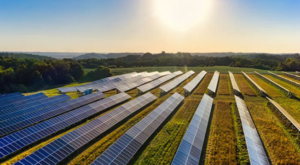India will require $215 bn to reach target of 500 GW renewable energy by ’30
As per Moody’s Ratings (Moody’s), India’s infrastructure companies will be spending on energy transition to meet demand resulting from the country’s relatively strong economic growth.
 NEW DELHI: India will require $190 billion-$215 billion of investment over the next seven years to achieve the target of 500 gigawatts (GW) of renewable energy capacity by 2030, according to Moody’s report.
NEW DELHI: India will require $190 billion-$215 billion of investment over the next seven years to achieve the target of 500 gigawatts (GW) of renewable energy capacity by 2030, according to Moody’s report.
The country will need another $150 billion-$170 billion of investment will be required for electricity transmission and distribution as well as energy storage.
“The sizeable pipeline of announced projects will keep the financial leverage of renewable power companies rated by Moody’s high over the next two-three years – a credit negative – but the leverage of government-related issuers will remain moderate over the same period, given their relatively strong balance sheets,” said Abhishek Tyagi, Moody’s Vice President and Senior Credit Officer.
He also highlighted the strong growth in the country’s renewable energy capacity to continue but coal will remain a major source of electricity generation over the next 8-10 years.
As per Moody’s Ratings (Moody’s), India’s infrastructure companies will be spending on energy transition to meet demand resulting from the country’s relatively strong economic growth. However, government policies and stable regulatory frameworks will support credit quality. It mentioned that the country needs to continue the policy support to help the country make significant progress toward its 2030 transition targets and 2070 net-zero goals.
“Strong policy support has helped India increase the share of renewable energy in its power capacity mix to around 43% in fiscal 2023, which ended March 2023, and fiscal 2024. Continued policy support will help the country make significant progress toward its 2030 transition targets and 2070 net-zero goals,” reads the report.
Meanwhile, ICRA, an affiliate of Moody’s in India, forecasts increased spending on transportation infrastructure projects, including on roads, ports and airports over the coming years, benefiting from solid government support, rising capital outlays and a large pipeline of projects.

Comments are closed.